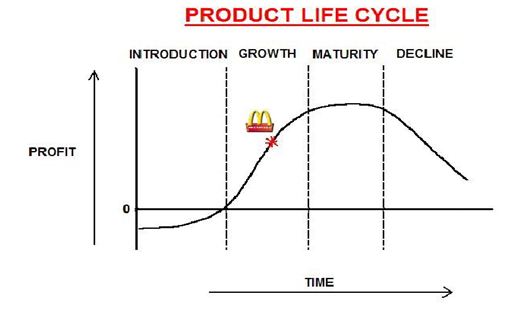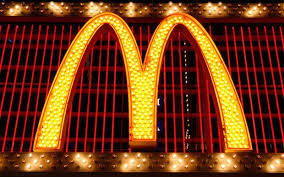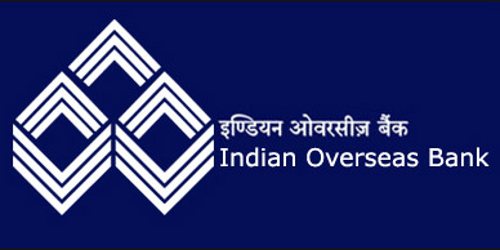Introduction:
When the Dick and Mac McDonald opened their first restaurant in San Bernardino, California in 1948, they never could have imagined the extraordinary growth their company would experience. From modest beginnings, they found a winning formula selling high quality products quickly and low-cost. It was not until 1955 when Ray Kroc, a salesman from Chicago, became involved in the business that McDonald’s really began to flourish. Kroc realized the same successful McDonald’s formula could be exploited throughout the United States and beyond with the use of franchising. A franchise is an agreement or license to sell a company’s products exclusively in a particular area, or to operate a business that carries that company’s name.
In 1955, Kroc knew that the key to success was through rapid expansion; thus, the best way to achieve this was through offering franchises. Today, over 70 percent of McDonald’s Restaurants are franchises. In 1986, the first franchised McDonald’s opened in the United Kingdom. Now, there are over 1,150 restaurants, employing more than 49,000 people, of which 34 percent are operated by franchisees. Moreover, there are over 30,000 these restaurants in more than 119 countries, serving over 47 million customers around the world. In 2000 alone, McDonald’s served over 16 billion customers. For perspective, that number is equivalent to providing a lunch and dinner for every man, woman, and child in the world! McDonald’s global sales were over $40 billion, making it by far the largest food service company in the world.
Because of the invention of franchising and the development of some of the most creative marketing and branding campaigns, McDonald’s is one of the world’s most well-known, valuable brands holding a leading share in the globally branded, quick service restaurant segment of the informal dining-out market in virtually every country in which they do business. As a leader in the fast food industry, McDonald’s is often targeted. Some of the ways McDonald’s handles the attacks of the media and competition is by creating a marketing mix to highlight the positive impacts the organization. McDonald’s must keep the strategic nature of its marketing efforts to stay on top and provide what customers want.
Marketing Mix:
Marketing mix must focus on the product, pricing, promotion, and placement of item in order to make it successful. Marketing strategies must feature customer orientation, input, and accessibility in the fight to the top of the market. McDonald’s is no different. One can recognize that McDonald’s primary target market is children ages 3-11 and their parents. McDonald’s understood that the parent was making the purchasing decision, most likely based on price.

What McDonald’s marketing executives did was ingenious. They put a $.50 toy in with the hamburger, french fries, and drink and gave it a special name, the “Happy Meal”. Then McDonald’s marketed the Happy Meal to the kids. If you have you ever asked your child where to buy a Happy Meal, they will tell you that there is only one place you can buy one, and that is at McDonald’s. The year in which some McDonald’s Favorites were Introduced are:-
1955 – Hamburgers, cheeseburgers, fries, shakes, soft drinks, coffee and milk
1963 -Filet-O-Fish
1968 -Big Mac and Hot Apple Pie
1973 -Quarter Pounder and Egg McMuffin
1974 -McDonaldland Cookies
1977 -Breakfast Menu
1978 -Sundaes
1979 -Happy Meals
1983 -Chicken McNuggets
1986 -Biscuit Sandwiches
1987 -Salads
1998 -McFlurry Desserts
1999 -Breakfast Bagels
2000 -Chicken McGrill and Crispy Chicken
2001 -Big N’ Tasty
2003 -Premium Salads, Newman’s Own® salad dressings and McGriddles
2004 – Chicken Selects® Premium Breast Strips
McDonald’s restaurants have a variety of strategies that apply to product, placement, promotion, and price that makes them one of the most successful, well-recognized organizations in the world.
Product Strategies:
McDonald’s marketing strategies should be looked at historically in order to see the larger picture of the firm’s success. There have been so many strategies since the inception of the firm that it is difficult to account for them all, the two most memorable are the development of the “Golden Arches” and “Ronald McDonald”. These two icons have given customers a mental image of what to look for when they want quality food for a low price fast. The firm revolutionized the fast food industry and positioned itself as the market leader with low-priced, quality food and provided an entertaining atmosphere for the children. These things were what that the market wanted at the time and the firm answered in spades.
The perceived secret of McDonald’s success is the willingness to innovate, even while striving to achieve consistency in the operation of its many outlets. For example, its breakfast menu, salads, Chicken McNuggets, and the McLean Deluxe sandwich were all examples of how the company tried to appeal to a wider range of consumers. The long history of innovation and experimentation resulted in new profit centers like Chicken McNuggets and the breakfast menu. Innovation and experimentation also produced some disappointments like the McLean Deluxe, but inevitably experimentation in limited outlets provides McDonald’s a way to retain its key strengths-quality and consistency-while continuing to evolve. The use of franchising, again, provides various perspectives that, in turn, lead to innovation for products and solutions. Franchisees agree to operate their restaurants in the “McDonald’s way” but there remains room for innovation. Many ideas for new menu items come from franchisees responding to customer demand. Developing new products is crucial to any business even those that successfully relied on a limited menu for many years. As consumer tastes change, menu innovation injects enthusiasm allowing the firm to explore markets previously overlooked or ignored. The “Egg McMuffin”, for example, was introduced in 1971. This item enabled McDonald’s to accommodate consumers of the breakfast market. Filet-o-Fish, Drive-thrus, and Playlands were all products or concepts developed by franchisees. McDonald’s tries a few new concepts simultaneous in different parts of the country to find the most promising new menu item. Those with the most potential could be rolled out further, while the ineffective ideas could be left to die quickly. This strategy may be expensive, but the potential to unleash new areas of growth in a maturing market seems to be right in line with what McDonald’s has always done.
In addition to the local flavors that have been created in the US, McDonald’s international restaurants have been conforming to local, regional, and ethnic tastes, too. In a recent McDonald’s case study this was explained further: “For example, ‘Maharaja McBurger’ is a vegetarian burger marketed in India. The special requirements for ‘Kosher’ foods are followed in Israel. Similarly, McDonald’s offers ‘Halal’ food in Muslim countries such as Saudi Arabia, UAE, Kuwait, Indonesia, Malaysia, Pakistan, and Bangladesh. During promotions, McDonald’s also introduces several other products. For example, its ‘Prosperity Burger’ is popular in China, Taiwan, Hong Kong, and Singapore at the time of the Chinese New Year celebrations. In order to respond to the growing phenomenon of health consciousness, McDonald’s has moved in favor of lean ground beef, 100% vegetable oil, 1% low-fat milk, low sodium, and low fat. This product strategy shows that McDonald’s is interested in becoming part of the culture and is looking for ways to appeal to the market internationally.
McDonald’s menu is based on five main ingredients: beef, chicken, bread, potatoes and milk. Their main products are hamburgers, chicken sandwiches, fries, and beverages. In addition, they serve a variety of breakfast items and desserts. Every McDonald’s is uniform; you know exactly what you will get no matter what store you go in to. Although McDonald’s has thousands of restaurants around the world, it standardizes menus and operating procedures in these restaurants to insure consistency throughout. To maintain consistency in the current menu while the firm tests new products to expand the product line, McDonald’s relies on test marketing new menu items in pilot locations. New products are rigorously market tested so that the franchisee will have a reasonable idea of its potential before it is added to the menu. The introduction of new products, which have already been researched and tested, considerably reduces the risk for the franchisee. The franchisees additionally benefit from the extensive national market research programs that assess consumer attitudes and perceptions. What products do they want to buy and at what price? How are they performing compared to their competitors?
This approach allows the firm to identify which items are likely to prove popular with consumers while ensuring that the company can deliver new products with consistent quality nationwide. McDonald’s already has a history of doing this so it will not require major changes to its operations strategy-at least initially. If the product line-up gets too large, then the task of maintaining quality becomes exponentially harder. The trick is to consider how to eliminate some of the existing menu items when you introduce new ones, while making sure the staff is fully trained in how to execute these products successfully.
McDonald’s serves the world some of its favorite foods – Fries, Big Mac, Quarter Pounder, Chicken McNuggets, and the Egg McMuffin. To this end, McDonald’s had done well with a limited product range. Declining per unit sales and competitors gaining ground, may indicate that McDonald’s menu needs a face-lift. One way to do that is by inserting a couple of new, highly promoted menu items. This would refresh the product menu and provide new, satisfying experience for dinner consumers.
Placement Strategies:
McDonald’s focuses on store placement and are always looking for the best locations. This strategy created some weakness in the last 10 years because it seemed that too many stores were put in some areas, cannibalizing sales from the other McDonald’s. The company has also made convenience a focus, not only through how fast it serves customers, but also in the location of its outlets. Freestanding restaurants are positioned so that you are never more than a few minutes away by foot in the city or by car in the suburbs. In addition, McDonald’s is tucking restaurants into schools, stores, and more.
Because McDonald’s has pretty well saturated the U.S. market, it’s only real opportunities for growth lie abroad, where the competition is not so cutthroat or by introducing new restaurant concepts under brands other than McDonald’s. The organization’s overall objective is to increase market share. In this instance, the focus is purely on localization with different strategies for different countries. Pricing could not possibly be standardized across the globe without alienating many countries with poorer economies, thus defeating the initial objective. McDonald’s set an appropriate price for their product by looking at its competitors in each country. McDonald’s is attempting to localize marketing communications due to the realization that it couldn’t possibly appeal to all countries at the same time. The firm sees the necessity to “brand globally, act locally”. For example, in China it was recognized that advertising on television would be a waste of money because commercials between programs are generally ignored. Instead, McDonald’s uses newspapers and magazines to promote its image. Similarly, in East Asia, McDonald’s targets children in order to gain optimum results. Of course, the ultimate message (brand) is the same; the medium is what is strategically modified.
Pricing Strategies:
The customer’s perception of value is an important determinant of the price charged. Customers draw their own mental picture of what a product is worth. A product is more than a physical item, it also has psychological connotations for the customer. The danger of using low price as a marketing tool is that the customer may feel that quality is being compromised. It is important when deciding on price to be fully aware of the brand and its integrity. A further consequence of price reduction is that competitors match prices resulting in no extra demand. This means the profit margin has been reduced without increasing sales.
McDonald’s strategy is to offer quality food quickly to customers at a good value. The pricing structure for McDonald’s over years has supported this message. The company strives to differentiate itself from other fast food restaurants by offering a variety of menu items that appeal to a variety of people from those who just want great hamburgers, to those who just want a quick healthy meal. McDonald’s differentiates itself by offering a dollar menu, combination meals, and a free toy with Happy Meals.
McDonald’s, over the years, has also ran many promostions to increase traffic or product sales. For instance, the most recent roll out has been the 2004 Chicken Selects premium Breast Strips. Right now, you can go to your local McDonald’s and “try them free.” With this new product is offered a variation of the “usual” sauces for the Chicken Nuggest – a Chipotle Barbeque sauce is most commonly advertised. Another promotion was the “Campaign 55” where diners could buy a featured sandwich, like the Big Mac in April, for 55 cents when purchased with fries and a drink. This campaign wasn’t as successful as the fast food giant found would have hoped.
Promotion Strategies:
McDonald’s knows that some customers go to its stores to take a quick break from their day’s activities and not because McDonald’s made the food ten seconds faster than their competitors could. Therefore, McDonald’s marketing executives then put together the phrase, “Have you had your break today?” They continued to develop this idea with “You deserve a break today,” and now are in the “I’m Lovin’ It!” mantra. “I’m Lovin’ It!” doesn’t seem to have as much punch as the earlier catch phrase, which still seems to be the favorite. McDonald’s sees the use of these catch phrases and the use of the Golden Arches as a very successful way of differentiating the restaurants from other fast food competitors. McDonald’s has taken price competition out of the picture because the customer feels they have gotten quality, convenience, service, and value – and McDonald’s still makes you feel like you are getting a break in your hectic day. Creating catch phrases are only one kind of promotion, and McDonald’s uses many kinds of promotions to keep the restaurants at the top of the industry.
With the rise of health consciousness it has become more difficult McDonald’s to compete because their reputation brands them as cheap food served fast. The firm’s response to obesity claims against the organization and other unfavorable public sediment is to add healthier items to their menu and promote and offer health-conscious alternatives to the “would you like fries with that” legacy. In addition, McDonald’s has modernized their advertisements, pamphlets, and website to include nutritional information and addressing diet restrictions. Breaking the unhealthy association is difficult on its own, but with media and movies such as “Supersize Me” adding to the fray, McDonald’s has had to look for alternative strategies to keep consumers happy.
Another promotional strategy McDonald’s uses is the huge investment in sponsorship. This is also a central part of the image building process. Sponsorship of the 1998 football World Cup, the Premier League and the European Championships increases awareness of McDonald’s brand. However, McDonald’s still follows Ray Kroc’s community beliefs today, supporting the Tidy Britain Group and the Groundwork Trust, as well as local community activities. McDonald’s has become a known community partner with Ronald McDonald Houses across the nation for the use of families whose children are hospitalized and getting treatment far from home. This organization has created an image of partnership and community investment with these and other kinds of philanthropic activities.
Determining which way to market McDonald’s and its products is a very important decision that can either cause products to fail or take flight. These same decisions must be made in regards to the marketing of the company as a whole. Strategy is the name of this game.
In a Nutshell:
McDonald’s marketing mix is strategic because of the diverse approaches that are used. First, in identifying the “four P’s” of marketing addressed earlier (product, price, promotion, and placement), research shows that McDonald’s is very careful in making decisions that effect each area and/or how each area effects the other. McDonald’s is concerned about how the firm will fulfill the needs and wants of its customers and in the activities associated with maintaining the relationships with its stakeholders. McDonald’s stakeholders include customers, franchisees, suppliers, employees, and the local communities surrounding them.
McDonald’s has shown care for customers through the decisions to add more healthful foods to the menus, by changing how products are packaged or how foods are prepared, and by philanthropic contributions and sponsorships. The restaurant has developed competitive advantages in the industry of serving quality fast food at a low cost. In addition to these decisions, the development of the Golden Arches or Ronald McDonald has provided consumers with memorable icons that are associated with quality, service, and value, just like the McDonald brothers and Ray Kroc intended.
McDonald’s faces some difficult challenges in moving away from the fast food king to a more health conscious provider for customers who care about what they eat. The keys to its future success will be maintaining its core strengths-an unwavering focus on quality and consistency-while carefully experimenting with new options. The company’s environmental efforts, while important, should not overshadow its marketing initiatives. Though there are many opportunities for this fast food giant, McDonald’s must keep the strategic nature of its marketing efforts to stay on top and provide what customers want.
Importance of PLC in McDonalds :
The requirements of customers change over time and thus the product offering has to be changed accordingly. What is the fashion today may be out of market within
few weeks. Thus continuous innovation is required.

To counter these changes McDonalds has continuously introduced new products and has phased out the old ones which were at the decline stage of their PLC. The introduction is timed such that the new product does not cannibalize the product already in the maturity or growth stage. Thus the secret lies in getting profits with different products in the different stages of the PLC.
A perfect example of revitalizing a product in decline phase:

The French Fries have been an important part of the McDonalds menu worldwide. But now it was in the stage of decline and was actually not generating proper return. In an attempt to revitalize it, a new variant was introduced namely Shake Shake Fries. This is being served with chatpata spice mix which has resulted in increase in the sales of French Fries and has elevated it from to the decline stage. This is used to delay the decline of a well established product which has the potential of generating further revenue.
McDonald’s Advertising :
McDonald’s has for decades maintained an extensive advertising campaign. In addition to the usual media (television, radio, and newspaper), the company makes significant use of billboards and signage, sponsors sporting events ranging from Little League to the Olympic Games, and makes coolers of orange drink with their logo available for local events of all kinds. Nonetheless, television has always played a central role in the company’s advertising strategy. To date, McDonald’s has used 23 different slogans in United States advertising, as well as a few other slogans for select countries and regions. At times, it has run into trouble with its campaigns. This “image” or “reputation” advertising has become a trademark of the company and created many memorable television moments and themes, including:
McDonald’s is Your Kind of Place (1967)
You Deserve a Break Today (1971)
We Do it All for You (1975)
You, You’re The One (1976)
Nobody Can Do It Like McDonald’s Can (1979)
Renewed: You Deserve a Break Today (1980 & 1981)
Nobody Makes Your Day Like McDonald’s Can (1981)
McDonald’s and You (1983)
It’s a Good Time for the Great Taste of McDonald’s (1984)
Good Time, Great Taste, That’s Why This is My Place (1988)
Food, Folks and Fun (1990)
McDonald’s Today (1991)
What You Want is What You Get (1992)
Have you Had your Break Today? (1995)
My McDonald’s (1997)
Did Somebody Say McDonald’s (1997)
We Love to See You Smile (2000)
There’s a little McDonald’s in Everyone (2001) – Canada Only
i’m lovin’ it (2003)
Comparison of McStrategies:
Past McStrategies:
- Product Development
– Successes: Fries, Happy Meal, Big Mac, Egg McMuffin, Promotions
– Failures: McPizza, Fajita, Carrot Sticks, McLean, and the Arch Deluxe
- Market Development
– Success: International growth
– Failure: Over-expansion in US
- Alternative locations
- Forward Integration
– Distribution through franchisees with control over store presentation, menu items
- Joint Venture: Franchisees
New Mc Strategies:
- Leverage Brand Equity
- Product Development: Focus on core business
- Quality and taste issues
- Food delivery methods
- MBX (McDonald’s Big Extra)
- Family Value Meal
- Joint Venture (Franchisee): Change methods of dealing with franchisees
– To better motivate owners and foster team spirit
– Enhance owners’ participation in process improvements
- Market Penetration and Development
– Continue International expansion
- Retrenchment
– Home office cost reductions
– Splitting into five geographic divisions
- Horizontal Integration
– Purchase competition with differing target markets
















